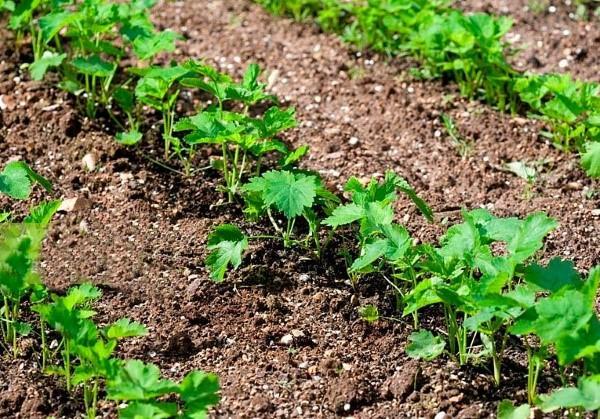Planting parsnips in open ground - what you need to do to get friendly shoots
 Of all crops, parsnip is the most hardy plant, which makes it much easier to grow. So, planting parsnips outdoors will free up time for growing seedlings of other vegetables. Agree that it is more convenient and easier to sow seeds directly on the beds, and then just thin them out than to bother with planting and transplanting seedlings. In addition, at home, this requires free space. Today we'll talk about how and when you can sow parsnips directly into the soil.
Of all crops, parsnip is the most hardy plant, which makes it much easier to grow. So, planting parsnips outdoors will free up time for growing seedlings of other vegetables. Agree that it is more convenient and easier to sow seeds directly on the beds, and then just thin them out than to bother with planting and transplanting seedlings. In addition, at home, this requires free space. Today we'll talk about how and when you can sow parsnips directly into the soil.
When to sow parsnips outdoors
Growing parsnips has a lot to do with planting carrots, it's not for nothing that these cultures are so similar in appearance.
There are two ways to plant seeds:
- In the spring. Despite the frost resistance, it is better not to rush to sowing. Wait until the soil warms up to at least 8 ° C. In cold soil, seeds that take so long to sprout can simply rot. In the middle lane, the end of April will be the optimal time for sowing. In the south, this can be done earlier, at the end of March, but it all depends on the weather conditions in the year of planting.
- Towards the winter. Natural stratification will only increase seed germination, so feel free to sow them in the fall. Then the spring shoots will be more friendly. But here also do not rush: wait until the first frosts come, while the ground will not freeze yet (no later than mid-October). Early planting will lead to the fact that the seedlings will not sprout according to plan and die.
Preparing the beds
Start preparing the soil for planting parsnips in open ground in the fall. Dig up the area by adding humus or compost. If the soil is poor or the garden has not been fertilized for a long time, add some mineral fertilizers (saltpeter, potassium salt and superphosphate). Do not use fresh manure, otherwise you will get ugly, gnarled and branching root crops.
Do not plant parsnips after similar root vegetables (carrots, celery, parsley) - they have common diseases. This vegetable grows best in the beds where tomatoes, potatoes, pumpkin and beets were grown last season.
Do I need to prepare seeds for sowing, and how
Parsnip seeds contain a lot of essential oils that make them difficult to germinate and reduce germination. In addition, already in the second year of storage, germination decreases by 2 times, or even more. Therefore, try to use only fresh seeds for growing. Soaking will help speed up their germination. First, put the seeds in a glass and cover with water. All that pops up - throw it away, they are empty. Place the rest on damp gauze and keep in a warm place until sprouts appear.
For winter sowing, the seeds do not need to be soaked.
Planting parsnips outdoors
For planting seeds, make grooves 2.5 cm deep and shed as needed. If there are several rows, leave a distance of about 30 cm between them. When planting with dry seeds, it is better to plant densely - parsnips do not have a very high germination capacity. Sowing sparsely will result in half of the beds being empty. If the seeds were previously soaked, sow less often. During preparation, empty seeds have already been rejected.
The joint planting of parsnips and radishes in one bed works quite well. Radish rises faster and earlier, loosening the soil and thereby helping the parsnip to hatch.The radish seedlings will mark the row and the beds can be weeded. And by the time the parsnips finally show up, you have already removed the early vegetable.
Fill the sown beds with your hand or lightly walk over them with a rake. When the parsnip is up and growing a little (up to 5 cm), be sure to thin out the crops. Leave at least 6-40 cm between each bush, because the roots are quite large. If necessary, if the crops are "successful" and dense, re-thinning.